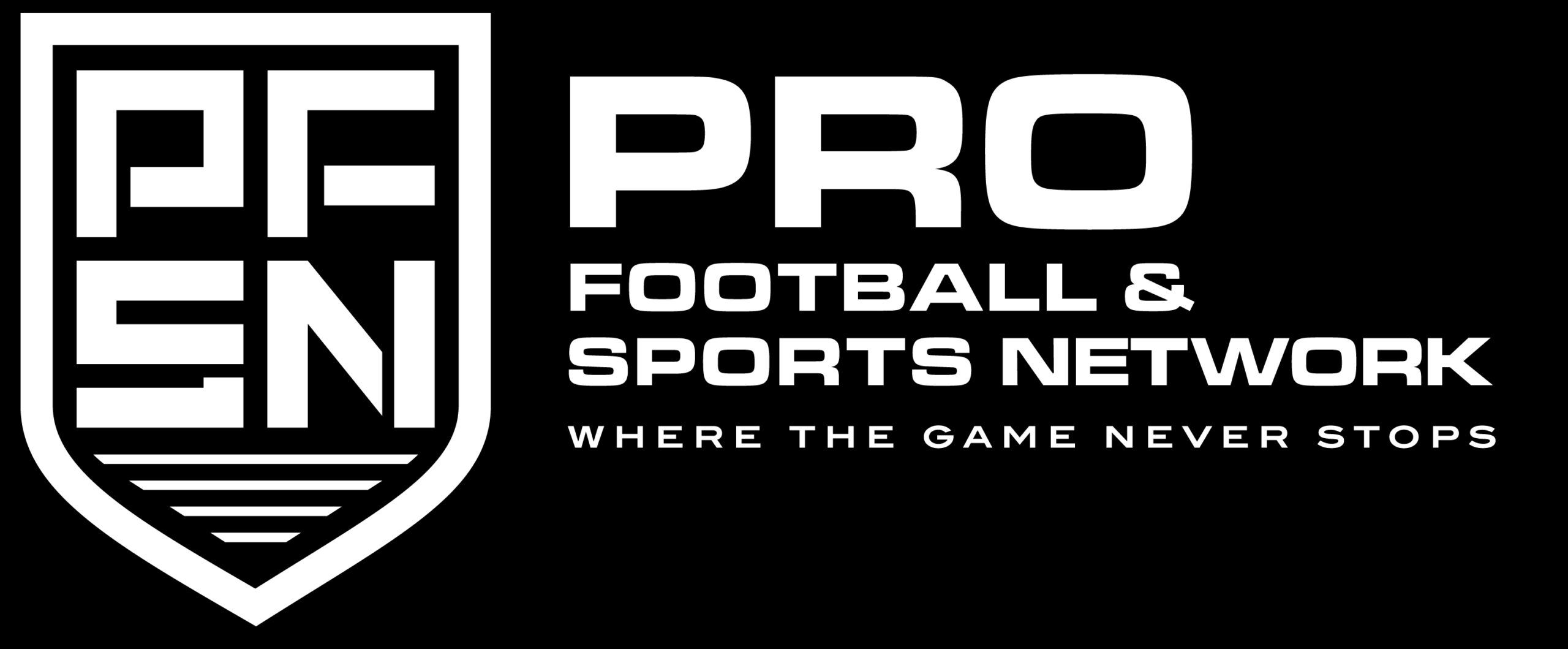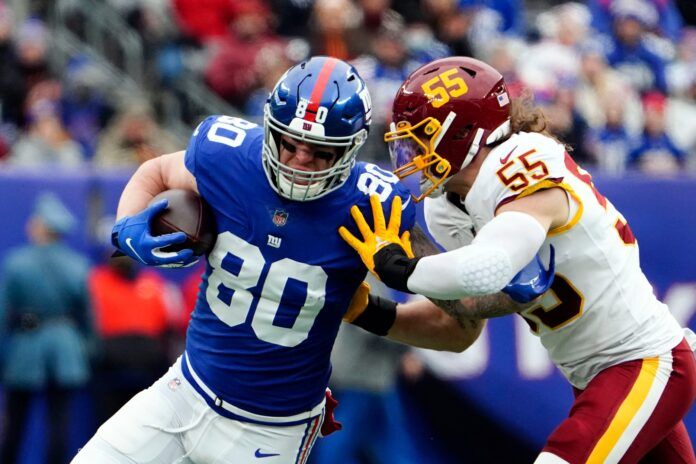The Tampa Bay Buccaneers are undergoing a transition period in several areas this season. Along with new head coach Todd Bowles taking over for his longtime mentor, Bruce Arians, the Bucs have been forced to reshape their roster following two years of substantial success. No position has seen more coming and going than the tight end spot, and the arrival of veteran Kyle Rudolph signifies the latest change for the position’s depth chart.
How Kyle Rudolph’s arrival can impact both phases of the Buccaneers’ offense
Former first-round pick O.J. Howard left in free agency, and then former Pro Bowl tight end Rob Gronkowski announced his retirement this summer. While some speculated that Gronkowski’s retirement would be short-lived, like Tom Brady’s month-long hiatus earlier this offseason, the other former New England Patriots standout has reiterated he is done with the game in recent weeks.
Gronk’s emphatic backing of his retirement plans forced the Buccaneers to improvise and look elsewhere for a proven safety net for Brady. Last Wednesday, the Buccaneers agreed to terms with Rudolph, who spent the 2021 season with the New York Giants.
Rudolph, 32, will be expected to team with fellow veteran Cameron Brate in two-tight end sets. Brate is more of a utility tight end, while Rudolph can still be effective as a playmaker. While Rudolph has dealt with his fair share of injuries over the past few years, he did collect 26 catches for 257 yards and a touchdown in a directionless offense in the Meadowlands last year.
Rudolph, prior to his one-year stop with the Giants, was a red-zone dynamo for the Minnesota Vikings, producing 48 touchdowns over 10 years with the NFC North franchise. Like Gronkowski, Brady can use Rudolph’s 6-foot-6, 265-pound frame to find size mismatches on must-have downs. Rudolph has soft hands and uses his size very well at the tight end position, which allows him to leverage his way in crowded areas. Brady and Rudolph should regularly connect in the red zone, in theory.
With the passing weapons the Buccaneers have in place, the ball will be spread around quite regularly, and Rudolph should be seen as a cog in the offense, as opposed to a driver of the attack. Brady has several mouths to feed, especially when Chris Godwin inevitably returns to the lineup. Until Godwin returns, Mike Evans, Russell Gage, and possibly even Brate should take priority in the passing game over Rudolph.
That said, Rudolph should be a reliable outlet for Brady as he looks to win ring No. 8. — Mike Kaye, PFN Lead NFL Reporter
How Rudolph could impact fantasy football
I must admit I did not think we would be talking about the fantasy impact of Rudolph, but just when you feel you have the NFL figured out, it loves to remind you that you don’t. Following Gronkowski’s second retirement, the Buccaneers were left with two options. Either head into the season with Brate and rookie Cade Otton or sign a veteran in free agency.
The Bucs opted for the latter, signing Rudolph just as training camp is about to take place. While it makes sense from a roster standpoint, it’s hard to be overly excited about Rudolph from a fantasy perspective. Rudolph hasn’t been a notable fantasy asset the last two years, catching 54 passes and two TDs in 28 games with the Vikings and Giants. He’s been used mainly as a blocker. But that was not always his role.
Rudolph has two seasons on his résumé with at least seven touchdowns, and he scored 25 from 2016-19 with Minnesota. Unfortunately, he hasn’t played an entire campaign in the last two years (27 of 33 games), and we have to go back to 2016 to find his career-best stat line of 83 receptions for 840 yards and seven scores. Since that season, Rudolph has totaled 12 TDs and 958 yards in 63 appearances.
Even with Rudolph joining the squad, I don’t see him running away with the job. Instead, Rudolph, Brate, and Otton likely see time on the field in different situations, with the two veterans earning the majority of the workload. At that point, managers are betting on who scores the touchdowns or receives the higher-leverage red-zone looks. Yet, when at full strength, those are just as likely to go towards Mike Evans or Chris Godwin than one of the trio of TEs. For the first time in a long while, selecting Brady’s tight end is no longer something I will be targeting on draft day. — Tommy Garrett, PFN Senior Fantasy Analyst
How Rudolph could impact Buccaneers’ betting odds
2022 will be Rudolph’s 12th professional season. He’s not young by any stretch, but 32 years old isn’t the same for a tight end as it is for a wide receiver. Rudolph could very well be the Bucs’ TE1 this season. It’s not as if Brate has been anything special.
With all that said, Rudolph’s arrival had no impact on the Bucs’ betting odds. Even in his prime, a team signing Rudolph wouldn’t have seen any movement in their odds as a result. At this point in his career, Rudolph can still be a useful player, but he’s not moving any needles. However you viewed the Bucs prior to Rudolph’s signing should be exactly how you view them now.
Tampa Bay is +750 to win the Super Bowl and -320 to win the NFC South at Caesars sportsbook. — Jason Katz, PFN Fantasy and Betting Analyst
How Rudolph’s arrival could impact Tampa Bay’s 2023 NFL Draft plans
In a vacuum, there are two kinds of free agency moves — short-term and long-term. The long-term moves happen early on, as teams look to spend capital on high-value assets and add more cornerstone pieces in their quests for contention. The short-term moves occur later. Especially in the summer, free agent veterans sometimes find new homes on one-year deals to help teams ramp up toward immediate contention.
That’s what Rudolph’s signing is for the Buccaneers — a short-term deal. In the wake of the losses of both Gronkowski and Howard, acquiring Rudolph on a one-year contract better enables Tampa Bay to maximize their remaining window with Brady. In his current state, Rudolph is only a modest TE2, but he still has the size and play strength to be a dangerous red-zone threat. Rudolph gives the Buccaneers’ offense — one that is defined by its variety of weapons — another unique option to utilize.
While Rudolph could end up playing an important role in 2022, if he stays healthy, he doesn’t impact the franchie’s long-term plans on the NFL draft landscape. Rudolph is aging and a free agent in 2023. Unless he experiences a career resurgence, the chances are high that he’s just a one-year rental for Tampa Bay. When the 2023 NFL Draft rolls around, the Buccaneers will still need an eventual successor to Brate, who enters free agency in 2024. And while Tampa Bay has a pair of intriguing rookies in Cade Otton and Ko Kieft, the depth chart may be too crowded for them to fully prove themselves in 2022.
Otton profiles as a well-rounded, if unspectacular TE for the Buccaneers. Meanwhile, Kieft is a blocking menace who fits well in a rotation. If the Buccaneers end up needing a red-zone threat to replace Rudolph, there are several options available in the 2023 NFL Draft group. Alabama’s Cameron Latu stands out in the early rounds. He’s a former EDGE convert who’s quickly trending up at TE. Last year, he broke the Alabama single-season record for TDs by a TE. He’s incredibly athletic, with natural separation ability, but also brings a physical edge.
If the Buccaneers choose to spend Round 1 capital at TE, Michael Mayer is the obvious front runner. But farther down the draft board, TEs who specialize in dominating size and red-zone ability include Zack Kuntz, Darnell Washington, and Kemari Averett. If nothing else, the depth of the incoming TE class allows Tampa to quickly pivot away from Rudolph if they need to. — Ian Cummings, PFN NFL Draft Analyst

